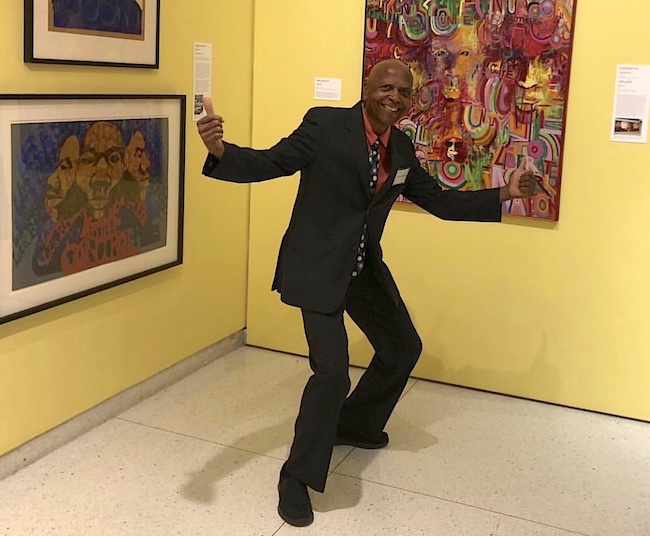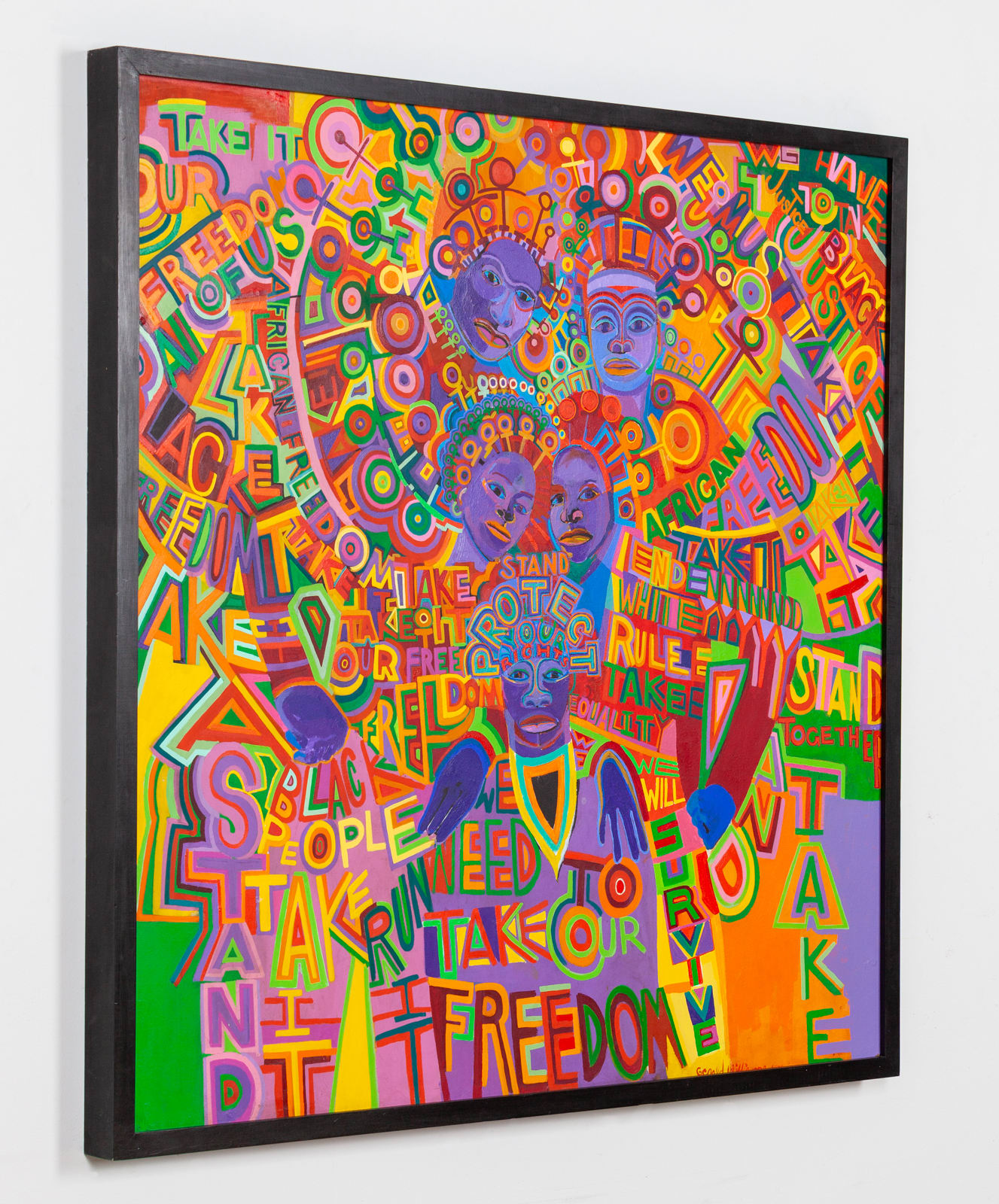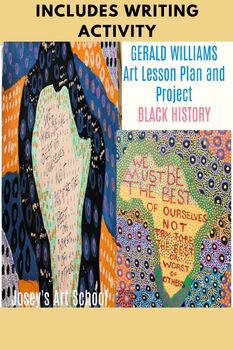

Take It
“A nation is a mental construct. Country is land, something you can dig in, concrete. A nation is how you perceive yourself, the relationships that people have among one another. The interactions that people have. That’s what makes a nation.”
- Gerald Williams
Gerald Williams is an American painter whose work explores culture, place and identity from a global perspective. Williams is one of the original five cofounders of AFRICOBRA, an artist collective formed on the south side of Chicago in 1967, which became the definitive visual expression of the Black Arts Movement.
Defined by civil rights struggles that came to a head with Martin Luther King Jr.’s assassination and the ensuing riots across the United States, 1968 was a pivotal if violent turning point for race relations in the country. That year, five African American artists in Chicago formed a collective that aimed to celebrate black culture and define its aesthetics and that came to be known as AfriCOBRA (African Commune of Bad Relevant Artists). As founding member Gerald Williams said in a 2011 interview for the oral history project Never the Same, the group, which is still active today, set out to investigate whether there was or should be such a thing as a culturally specific black art.
Source: CLICK HERE

Family
In an interview about the movement, Williams had this to say:
RZ: And what did belonging to AfriCOBRA and the AfriCOBRA philosophy mean for you as a young artist?
GW: Oh, it meant everything. It really did, you know. I didn’t have a clear direction other than what I was gleaning from my studies at the Art Institute and other art history classes. It turned me completely around and really caused me to focus on my own environment. And I can tell you that one of the instructors I had had, I had to go to a ballet, as part of a music appreciation class, and it was Coppélia or one of those ballets, and then later on I was just doing some sketches of some ballet dancers, in a life drawing class or something, and doing quick sketches of ballet dancers, Degas kinda like flashed through my mind, and then later on in another class an instructor said, “you don’t know anything about ballet.” And he said, “why don’t you draw what’s around you?” It made me mad; it was kind of an insult. I said, no, I don’t, you know, I like it, it’s music and dance and it’s expressive and colorful and you know, and I like the way the dancers move their bodies and it would be a nice thing to be able to draw! [chuckles]
But you know, he was right, you know, paint what you know, or draw what you know, and look at it as what you know. And it was just about that time that AfriCOBRA really became an important aspect of my involvement in art. So it caused me to focus a lot, it was a linchpin for all of us. We all had our style, Wadsworth had a style that was already well developed and Jeff had a style that was already developed and Jae had her medium that she was developing as well as Barbara. But we all made a quantum leap from where we started to where we wound up after our first conscious effort to focus on the principles that we decided to work on.
SOURCE: Click here for full Interview

CLICK HERE TO VIEW ALL OF THE LESSONS I HAVE IN MY "TEACH ABOUT BLACK ARTISTS" SERIES
